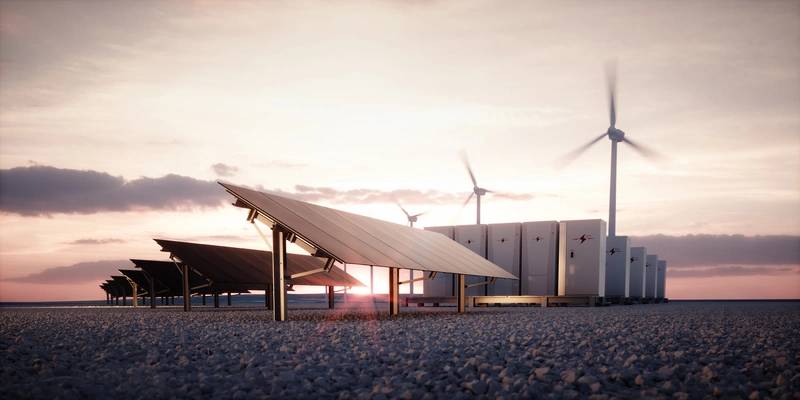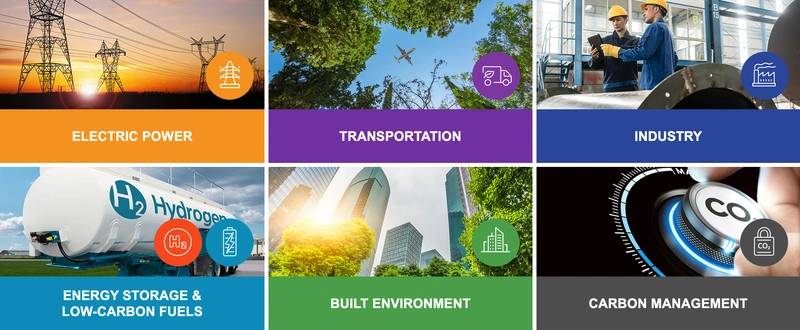
The MIT Energy Initiative (MITEI) launched a new research consortium—the Future Energy Systems Center—to address the climate crisis and the role energy systems can play in solving it. Randall Field, Executive Director, discusses current research and the challenges ahead for the maritime sector.
The reputation of the Massachusetts Institute of Technology (MIT) is such that it can take mammoth issues — such as driving the world to net zero — head-on, and suddenly make the impossible seem possible.
Last month the MIT Energy Initiative (MITEI) launched a new research consortium — the Future Energy Systems Center — which aims to address the role energy systems can play in solving the climate crisis, an integrated effort which will engage not only researchers from across all of MIT but a multitude of corporations and global organizations to help drive emission reductions across all industries further, faster.
“The Future Energy System Center (today) has 26 member companies in it,” said Randall Field, Executive Director, Future Energy Systems Center. “We have more than 20 different projects in our research portfolio today across six focus areas, including transportation. The center lives within the MIT Energy Initiative, which has been in existence since 2007 when Ernie Moniz and Bob Armstrong started it up, and we’ve deployed more than $850 million in funding to date.”
The Future Energy Systems Center’s mission is to investigate the emerging technology, policy, demographics, and economics reshaping the landscape of energy supply and demand. The Center conducts integrative analysis of the entire energy system—a holistic approach essential to understanding the cross-sectorial impact of the energy transition.
There are, of course, many collaborations and initiatives globally that seek to draw the brightest minds and deep pockets to fund R&D. But Field said the Future Energy Systems Center is unique and collaborative.
 Image courtesy Shutterstock/MIT
Image courtesy Shutterstock/MIT
“Our approach to the energy transition is to take a holistic look at the entire energy system and consider all the sector coupling issues, which are massive because decarbonizing the world is a very complex beast,” said Field. “We think of MIT as technology, and it is, but we look at the technology, we look at the economics, and we look at the policy issues. We also engage closely with industry because industry are the ones who are going to deploy the technology. We talk about different groups working on this, I also want to commend our friends over at the Mærsk Mc-Kinney Møller Center for Zero Carbon Shipping. We have had great discussions with them and we’re looking forward to collaborating with them on the decarbonization of shipping.” The overarching focus of the Center is integrative analysis of the entire energy system, providing insights into the complex multi-sectorial transformations needed to alter the three major energy-consuming sectors of the economy — transportation, industry, and buildings — in conjunction with three major decarbonization-enabling technologies — electricity, energy storage and low-carbon fuels, and carbon management.
While the Future Energy System Center’s remit extends far beyond the confines of the maritime industry, Field maintains that shipping offers its own set of unique and difficult hurdles.
“Shipping is a very tough sector to decarbonize, as there are no fuel options out there that address all the requirements for international shipping,” said Field.
Those requirements include high energy density, the potential for that fuel to be zero carbon in the future, the ability to scale those fuels as needed for the shipping sector, and very importantly, low cost as well as health and safety.
“New ships ordered today will still be in service in the year 2050 when we’re trying to get to net zero,” said Field. “So it’s a very difficult choice for shipping companies to make on what their ships should be, so the lock in challenge is very severe.”
“No Silver Bullet”
A common refrain when discussing maritime fuels and technologies in the context of decarbonization is that there is ‘no silver bullet.’ “Every fuel option has its challenges and uncertainties,” said Field, including challenges on scale, cost, carbon intensity, energy density, power train maturity, and emissions, with emerging alternative diesel options today including various biofuels, synthetic fuels, methanol, hydrogen, ammonia and renewable LNG. “Some of these can serve as drop in fuels, which makes the flexibility issue much more straightforward, but others require entirely different power trains,” which creates many challenges, including problems centered on future modification. While there are many new and emerging technologies and techniques that offer promise to help reduce fuel consumption and reduce emissions, there is nothing today that brings it to net zero, which is the cornerstone of the Future Energy Systems Center. “Anything that delivers efficiency with existing ships is highly valuable, whether it be friction reduction by the surface coatings, design of the hulls, optimization of logistics, weather and route optimization and slow steaming (for example),” said Field. “There’s a lot of opportunity there that should be done to deliver more profits for the shipping companies. But while efficiency is wonderful, necessary and profitable, it doesn’t get you to net zero.”
 Image courtesy MIT
Image courtesy MIT
The Path Ahead
As a member-supported research consortium, the Center collaborates with industrial experts and leaders for insights to help researchers anticipate challenges and opportunities of deploying technology at the scale needed to achieve decarbonization. And while technology is an obvious focus, Field sees a bigger challenge ahead.
“The technical issues, the cost issues, those are manageable issues. The biggest challenge that I see here is the geopolitics and the policy uncertainty,” said Field. “If the world could implement policies that are firm, that are long-term and eliminate leakage, then the shipping industry and the ship builders and the fuel providers would then have a clear and compelling price signal on what they need to do. The innovators and investors would be able to contribute to bringing down the costs. Sadly, we are very far from having such policies.”
By “leakage” Field means that some shipping companies abide by IMO rules, others do not. Those that chose to skirt the rules will produce the CO2 emissions that could effectively undo all of the good that’s being done by the shipping companies that follow the rules.
But rule makers and rule breakers are not the primary focus of Field and his team at the Future Energy Systems Center today.
“We have quite a few projects underway as I mentioned, more than 20, and all of the low carbon fuel pathways for shipping involve hydrogen at some stage in their production,” said Field. “Even if you’re not going to put hydrogen on ships, hydrogen may be involved in producing that synthetic fuel. We have a number of projects underway that are tackling the question of hydrogen, including a project we’re starting now looking at pathways towards gigaton scale, low carbon hydrogen production.
Another project starting in February will look at large scale use of ammonia as a fuel for maritime shipping.”
The Future Energy Systems Center members to date include: AECI, Analog Devices, Chevron, ConocoPhillips, Copec, Dominion, Duke Energy, Enerjisa, Eneva, Eni, Equinor, Eversource, Exelon, ExxonMobil, Ferrovial, Iberdrola, IHI, National Grid, Raizen, Repsol, Rio Tinto, Shell, Tata Power, Toyota Research Institute, and Washington Gas.
Watch the interview with Randall Field on Maritime Reporter TV:



